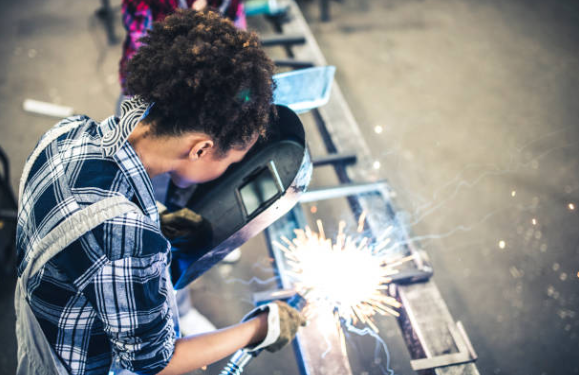(ThySistas.com) With the increase in complexity of industrial applications, available piping systems and products must evolve to keep up. While there is a wide array of pipe manufacturing methods used today, the most prominent discussion in the industry involves welded vs. seamless steel pipe.
Both options have been used for decades, and over time, the methods and techniques used to produce each one has advanced significantly. While this is true, the question remains, which one is best?

Welded Pipe
Welded pipe begins as a long length of coiled ribbon of steel, commonly referred to as the skelp. To produce quality steel tubing, the skelp is first cut to the proper length, resulting in a flat, rectangular sheet. Precision at this stage is crucial, as it ensures consistency in the finished product.
The width of the sheet’s shorter end becomes the outside circumference of the pipe—this measurement is then used to calculate the outside diameter. Careful control during cutting and forming is essential to maintaining uniformity and structural integrity, both key characteristics of top-quality tubing.
For steel tubing to be created, the rectangular sheets are put through a rolling machine. This machine curls the longer sides up, creating the cylinder shape. During the process, a high-frequency electrical current passes between the edges. It’s this current that causes the edges to melt and eventually fuse together.
One of the main advantages of welded steel pipes is that no fusion metals are used and that the weld seam is unable to be felt or seen. This is completely different than the DSAW (double submerged arc welding) method, which creates an obvious weld bead that has to be eliminated for some applications.
Methods used for welded pipe manufacturing have improved significantly in recent years. One of the most important advancements was the switch to using high-frequency currents for the welding process.
Before this change occurred in the 1970s, a low-frequency current is what was used. This type of seam is more prone to seam failure and corrosion.
Seamless Pipe
Seamless pipe starts out as a solid hunk of cylindrical steel. It’s referred to as the billet. While it’s still hot, the billets are pierced in the middle using a mandrel. The next step in the process is to roll and stretch the hollow billet.
This process is extremely precise and continues until the billet meets the wall thickness, diameter, and length requested in a customer’s order.
Some types of seamless pipe harden as they are made, which means heat treatment after manufacturing isn’t necessary. There are others that require heat treatment. It’s smart to consult the type of pipe being used to determine if heat treatment is even necessary.
Making a Choice
Generally speaking, a welded pipe is considered the weaker option due to the weld seam present. Seamless pipe lacked this structural flaw and is considered a safer option.
Even though this is the case, a welded pipe has a seam, today’s manufacturing techniques and the quality assurance processes have improved the extent at which the welded pipe will perform as needed as long as the tolerances have not been exceeded.
Even though the advantage is pretty clear, some are critical of the rolling and stretching process used for the seamless piping, making the claim that it produces an inconsistent wall thickness compared to the more precise thickness of the steel sheets used for welding.
In most cases, the decision is going to be based on the project and personal preference. But learning about the specifics of each can help anyone better understand what each option has to offer.
Staff Writer; Paula Gold










Leave a Reply